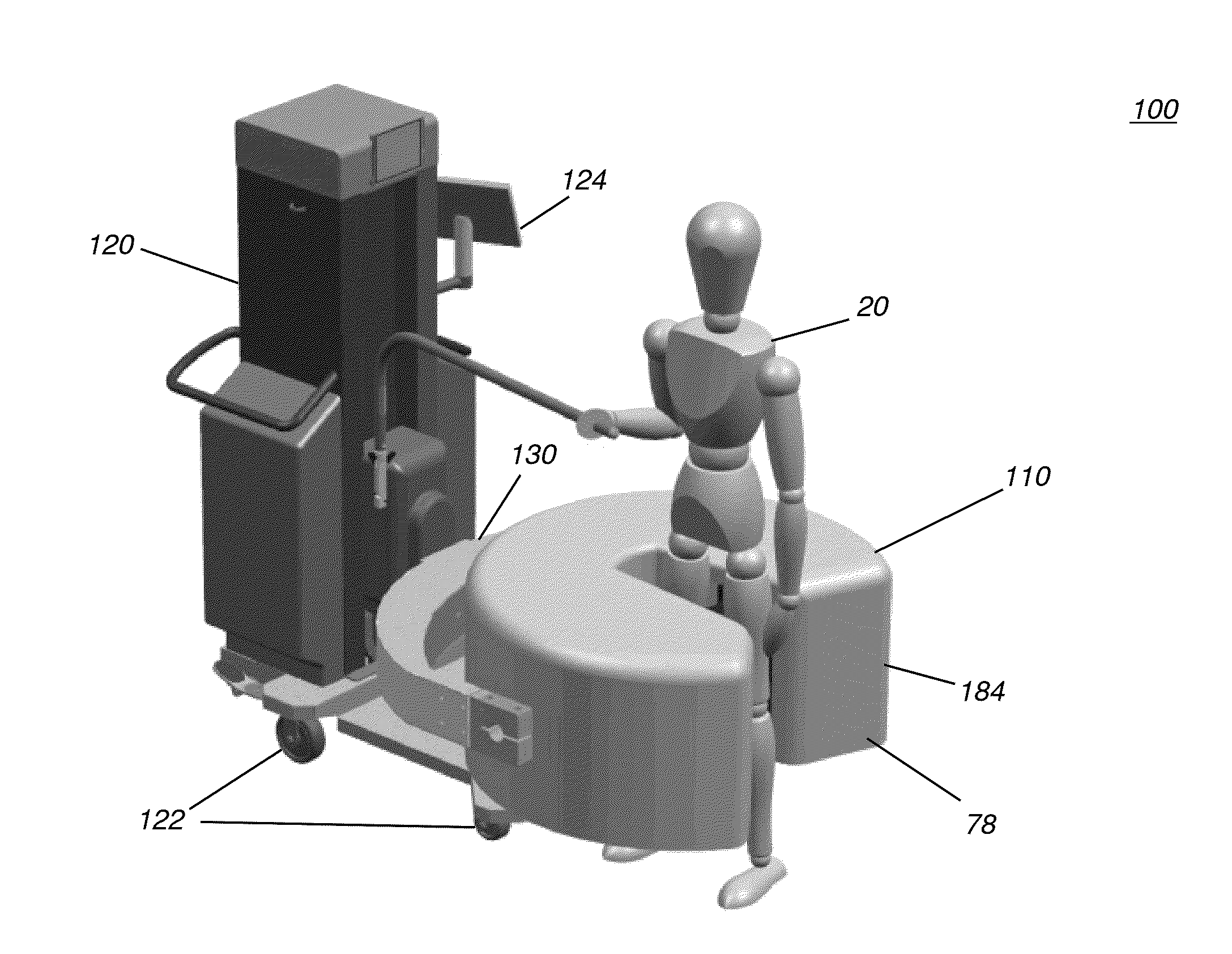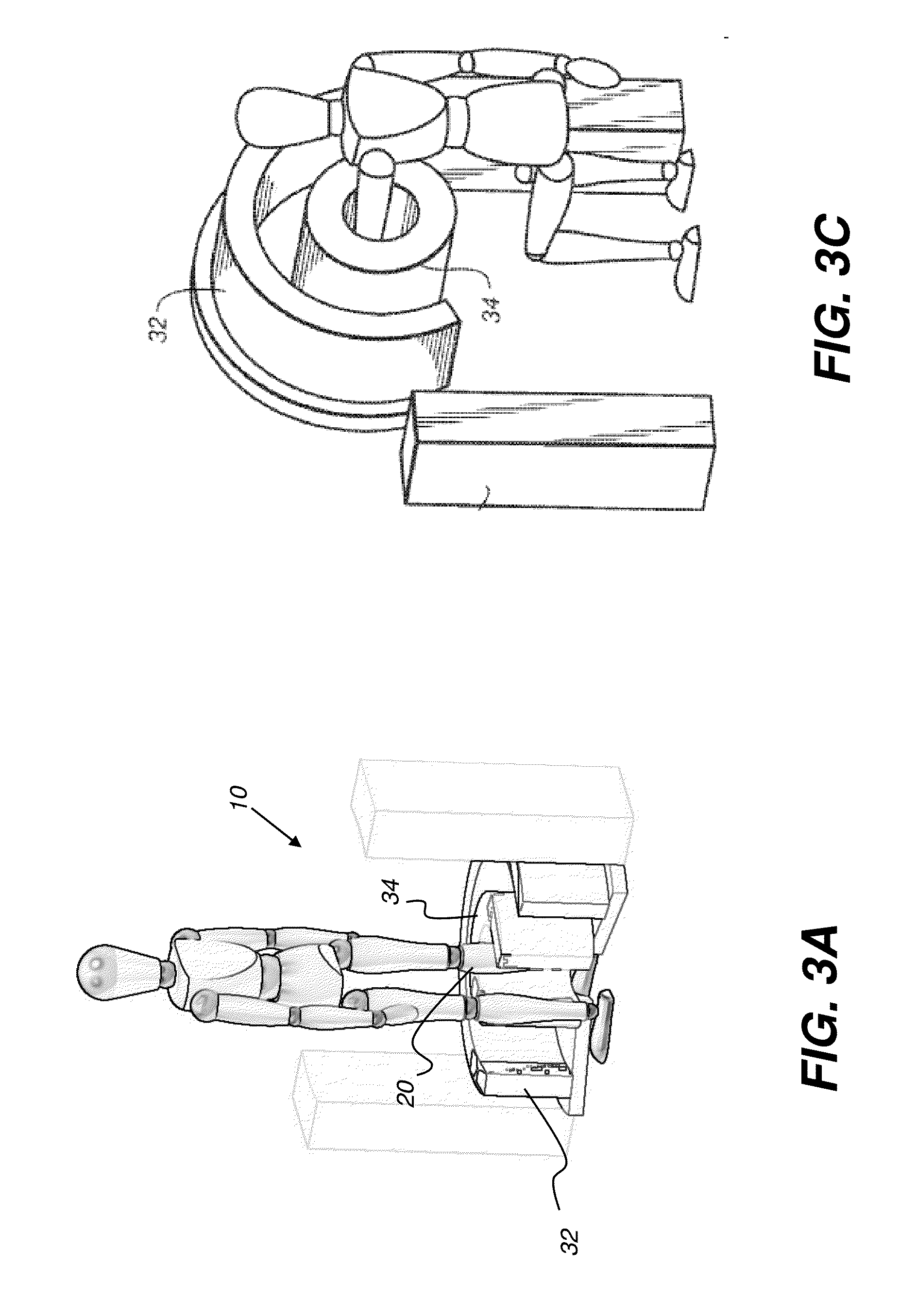Extremity imaging apparatus for cone beam computed tomography
a computed tomography and extremity imaging technology, applied in the field of diagnostic imaging, can solve the problems of difficult to obtain cbct, hampered cbct imaging of legs, arms, other extremities, etc., and achieve the effect of achieving a much more than about 180 degree revolution for knee or other imaging
- Summary
- Abstract
- Description
- Claims
- Application Information
AI Technical Summary
Benefits of technology
Problems solved by technology
Method used
Image
Examples
Embodiment Construction
[0074]The following is a description of exemplary embodiments of the invention, examples of which are illustrated in the accompanying drawings. Wherever possible, the same reference numbers will be used throughout the drawings to refer to the same or like parts.
[0075]For illustrative purposes, principles of the invention are described herein by referring mainly to exemplary embodiments thereof. However, one of ordinary skill in the art would readily recognize that the same principles are equally applicable to, and can be implemented in, all types of radiographic imaging arrays, various types of radiographic imaging apparatus and / or methods for using the same and that any such variations do not depart from the true spirit and scope of the application. Moreover, in the following description, references are made to the accompanying figures, which illustrate specific exemplary embodiments. Electrical, mechanical, logical and structural changes can be made to the embodiments without depa...
PUM
 Login to View More
Login to View More Abstract
Description
Claims
Application Information
 Login to View More
Login to View More - R&D
- Intellectual Property
- Life Sciences
- Materials
- Tech Scout
- Unparalleled Data Quality
- Higher Quality Content
- 60% Fewer Hallucinations
Browse by: Latest US Patents, China's latest patents, Technical Efficacy Thesaurus, Application Domain, Technology Topic, Popular Technical Reports.
© 2025 PatSnap. All rights reserved.Legal|Privacy policy|Modern Slavery Act Transparency Statement|Sitemap|About US| Contact US: help@patsnap.com



